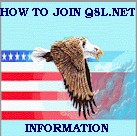|


O R A R I
Organisasi Amatir
Radio Indonesia
Zone 28 Oceania



Best view with:

 800 x 600 pixels
800 x 600 pixels
and
This
TrueType
font
|

Samuel F.B. Morse (Apr 27, 1791 - Apr 2, 1872),
an American inventor and artist. Morse developed the
electric telegraph and the signaling code that
bears his name. He established the first U.S.
telegraph link between Baltimore and Washington,
D.C., in 1844, inaugurating instantaneous
long-distance communication.
(The Bettmann Archive)
|
Samuel Finley Breese Morse, (b. Charleston, Mass., April 27, 1791, d. April 2, 1872)
achieved distinction both as an artist, particularly as a painter of miniatures, and as an inventor.
Morse was the son of a Calvinist minister. He was educated at Yale College but also went to Europe
for art training. It was during the return voyage from one such trip (1832) that he conceived of an
electromagnetic signaling system.
Although Morse continued with his artistic activities in New York and became first president of
the National Academy of Design, serving from 1826 to 1845, his main activity after 1837 was the
development of an electric TELEGRAPH. Systems making use of a deflecting magnetic needle
had already been developed by a number of workers, particularly Sir W. F. Cooke and Sir
Charles Wheatstone, who installed the first railway telegraph system in England in 1837.
Morse's important contribution was that he based his receiver on the ELECTROMAGNET. This
feature ultimately ensured the universal adoption of his system. When the electromagnet was
energized by a pulse of current from the sender, a soft iron armature was attracted to the magnet,
producing a V-shaped deflection in the straight line being recorded on a moving strip of paper by a
pencil attached to the armature. The grouping of a succession of such marks symbolized the
words of a message.
Morse soon devised a code whereby letters and numbers were represented by combinations of
dot and dash symbols, which corresponded to signals of short and long duration (see MORSE
CODE). With the aid of Alfred Vail, the original receiver was greatly improved and adapted to
print the dot-and-dash symbols. Such a system was used in the first U.S. telegraph link that
Morse set up in 1844 between Baltimore and Washington. Morse defended his patent vigorously
and secured recognition by the Supreme Court in 1854. In addition, he held a chair in Natural
Science at Yale.
[Eric Eastwood]
Bibliography:
Larkin, Oliver W., Samuel F. B. Morse and American Democratic Art (1954);
Mabee, Carleton, The American Leonardo: A Life of Samuel F. B. Morse (1943; repr. 1969);
Morse, El L., ed., S. F. B. Morse: His Letters and Journals, 2 vols. (1914; repr. 1980);
Prime, Samuel I., The Life of Samuel F. B. Morse (1875; repr. 1974).
|



![QSL.net [25885 bytes]](https://www.qsl.net/kb2ytf/qsl_net_big.gif)

